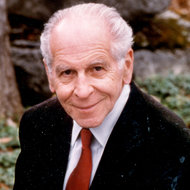A few days ago, Dr. Stern, Chris’s psychiatrist recommended that he go back on Abilify. I was dumbfounded! My observations were that Chris had been doing particularly well in the past weeks. He keeps up with his musical theater work, he was a project leader on a volunteer day, and he recently invited a woman friend over for dinner. A potential love interest is always promising news, IMHO.
So I e-mailed Dr. Stern asking her what she saw that I didn’t. And in return I got a list of behaviors that Chris was showing that were causing Dr. Stern to think he should be back on a low dose of Abilify for the time being. He was continuously late for his appointments, he kept forgetting to buy an appointment book (despite her many reminders) he was talking very negatively about himself and his body movements were becoming less coordinated. According to Dr. Stern, he is showing prodromal symptoms. For several months, Dr. Stern has been taking a wait and see attitude with regard to possibly reinstating Chris’s med.
Before telling Ian (my husband) about this latest development, I asked him how he thought Chris was doing. “Getting worse” wasn’t his answer. He thought for a while, probably wondering what answer I was hoping he would say, and then said something to the effect that he’s doing okay, there’s always room for improvement, etc.
Once I divulged to Ian what Dr. Stern had to say, then he said he could see what she was talking about. He was all for getting Chris back on a medication.
I know what Dr. Stern is talking about. I noticed that Chris seemed more anxious for a while, and then the anxiety subsided. He has been dragging himself to his weekly appointments with Dr. Stern for ever, it seems, and he’s often late. I wonder if Chris is more anxious in the presence of Dr. Stern. I also wonder if Chris is sick and tired of seeing her twice a week, while he continues to have nothing to fill his days with. I’d be depressed, too. Is his showing up late for his appointments a passive reminder that he doesn’t want to be there, anymore? He seems to have no trouble arriving for his rehearsals on time. For now, anyway.
The cyclical nature of the past eight years has taught me that things may seem good for a really long time, there is always the danger of a backslide.
I can bitch about the fact that Dr. Stern’s twice a week psychotherapy hasn’t fixed Chris, and his occupational therapist hasn’t managed to get Chris occupied with work, but neither can I ignore their observations.
The last time Chris relapsed was when his youngest brother went away to college, the same period when Chris was finally off all his medications. Is this coincidence or not? I honestly don’t know. When I asked Chris at the time, why he relapsed, his answer was that he missed having Taylor around. With his little brother gone, he got more and more weepy, and he took on all of the prodromal symptoms of what is called “psychosis,” which eventually put him back in the hospital and back on medication. This time around, our middle son, Alex, has moved out. Sept. 15th to be precise. Chris is already expressing his sadness at not having Alex around, even if he only saw Alex for a minute in the morning or a little bit a night.
Dr. Stern acted fast to hopefully turn off the early signs of future relapse. I say, hopefully, because I just don’t know what helps prevent relapse and what doesn’t. I’ve feel I’ve looked at the question from all angles and still come up short. What I do think I know is that, at this stage of Chris’s evolution, having regular work and, better yet, paid work during the day, and cultivating friendships in the workplace might go a long way to help his depression. I say “might” because I really don’t know what recovery is all about. Everybody has a theory. I can’t make recovery happen for Chris. I can guide, I can step back, I can supply him with information, but at some point I give up.
The first step is to break Chris’s unhappiness before it gets out of control, and if this has to be a chemical cosh, it will just have to be. I’ve tried all kinds of non-drug alternatives that have increased his resilience. He’s just not 100% resilient, yet. I will ignore all the doom and gloom information about antipsychotic drugs and their side effects, because it’s in my best interests now to stay calm. Antipsychotics have their place, and they may be the only tool at one’s disposal during a crisis that can stabilize the situation quickly.
In the meantime, here’s what I’m doing to handle this crisis, in no particular order.
- I’m trying to be positive and upbeat.
- I’m using mindfulness techniques and visualizations.
- I’m giving Chris practical advice (and, yes a few ultimatums) for organizing himself. One is get a mobile phone by Friday and load all of his contact numbers into it. Two is to get a bus pass. No more excuses of being late to appointments because he doesn’t have change for the bus.
- I’m trying to put this latest piece of news in perspective. Chris has generally been doing well, so this is just a bump on the road to eventual full recovery.
- I’m taking a renewed interest in helping him find his way.

